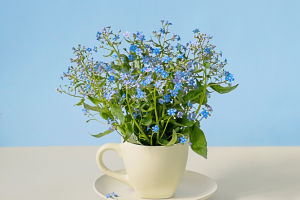In a world that often feels fast-paced and overwhelming, the humble cactus stands as a testament to resilience and adaptability.
These spiny succulents, native to the arid regions of the Americas, have found their way into homes worldwide, offering not just visual appeal but a host of practical benefits. Discover why adding a cactus (or two) to your living space can elevate your well-being and transform your indoor oasis.
The Perks of Potted Prickly Friends
Cacti are renowned for their low-maintenance nature, making them an ideal choice for busy individuals or those new to plant care. But their advantages go far beyond their ease of cultivation. These sturdy plants are natural air purifiers, absorbing harmful toxins like formaldehyde and benzene, which can be found in common household items. By introducing cacti into your living or work environments, you're not only enhancing the aesthetic but also actively improving the air quality around you.
CACTI CARE TIPS | COMMON PROBLEMS WHEN GROWING CACTI | SUCCULENT TROUBLESHOOTING
Video by Succulents Box
Decorative Diversity: Cactus as Living Art
Beyond their practical applications, cacti are simply mesmerizing to behold. With their unique shapes, vibrant colors, and architectural silhouettes, these botanical wonders can serve as living sculptures, adding visual interest and personality to any room. From the towering, columnar saguaro to the diminutive, globular pincushion, there's a cactus to suit every style and space. Arrange them in minimalist planters, group them together for a striking display, or let a single specimen take center stage as a captivating focal point.
Cultivating Cactus Care: Tips for Green Thumbs and Black Thumbs Alike
Contrary to popular belief, cacti are not entirely "set it and forget it" plants. While they are remarkably resilient, they do have specific needs to thrive. The key is understanding their arid climate adaptations and providing the right growing conditions. Start with well-draining, sandy soil and a container with ample drainage holes. Cacti prefer bright, direct sunlight, so situate them near a sunny window or under grow lights. When it comes to watering, less is more – allow the soil to dry out completely between waterings, and avoid letting the roots sit in moisture, which can lead to rot.
Troubleshooting Cactus Concerns
Even the most seasoned plant parent may encounter the occasional cactus conundrum. Yellowing or wilting leaves can signal overwatering, while shriveled, wrinkled stems may indicate underwatering. Brown or black spots may be a sign of disease, while pests like mealybugs or scale can also cause problems. If issues arise, don't panic – with a little troubleshooting and TLC, your cactus can often bounce back. Adjust your watering and light levels, and consider repotting if the plant seems rootbound.
As you embark on your cactus-growing journey, embrace the quirky charm and resilience of these botanical wonders. Whether you're seeking to purify your air, enhance your decor, or simply cultivate a newfound appreciation for nature's adaptability, the cactus is a prickly ally that's sure to add beauty, interest, and a touch of the wild to your indoor oasis.


